
How Do You Make Your Business Customer Centric?
It’s easy to claim that you are all about your customers, but it’s difficult to actually be customer centric. Just because you say and think your company is customer centric doesn’t actually make you customer obsessed.
What does it mean to be customer centric?
To truly be a customer centric company you need to understand who these people are. How do they discover your product? Why do they want to buy your product or visit your store?
When customers make purchases today it’s no longer the straight line of times past. Instead now they want to build relationships with businesses and companies. In addition, they do research, talk to friends and family about your company, look you up on Facebook and Twitter, read online reviews, and then, if your business passes all this, then they might buy something from you.
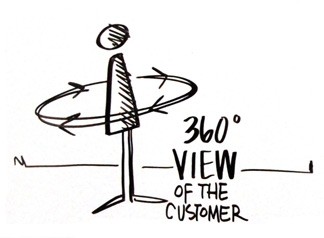
So what’s a business to do? Become obsessed with understanding this process. By understanding exactly what your customers’ purchase process is you can help influence their behavior along the way. Being customer centric doesn’t just mean that you value and appreciate your customers anymore. It now includes the task of knowing your customers as well as they know themselves.
How can you become customer centric?
One of the biggest competitive advantages your business can have in today’s market is your company’s relationship with your customers. Not sure if you’re building these relationships? Here’s how you can grow and maintain these relationships:
Keep Track of Your Customer
Do you have a database with your customers’ information? If you do, great, but are you taking advantage of it? Are you sending out reminders to customers that have bought certain products/services? If you aren’t, you really should be. These are instances that can make your customers into repeat and frequent customers. If you aren’t, what are you waiting for! Give your customers an incentive (maybe 10% off their next visit) to hand over valuable information such as their name, email and date of birth. Then use the information to keep them informed about new inventory arrival or an upcoming promotion. Just make sure it is relevant to them.
Reach Your Customer Across ALL Channels
Now you know who your customers are, so start talking to them. Did they give you their email? Send them a newsletter once a month. Do they like you on Facebook or follow you on Twitter? Make sure you are keeping your social media channels up-to-date with your company’s latest news, promotions and products.
Measure It
One of the most important things to do is keep track of what is working. Did you see an increase in in-store traffic when you were running a Facebook offer? Did you have more phone calls sales leads during your Adwords campaign? Keeping track of what is working and what is not working can help you determine what advertising mediums works best for you business.
The above-mentioned are just stepping stones to help your company become customer centric. If you really are interested (which you should be) in learning exactly who your customer is and what their purchasing process is, you should think about doing a little market research answering questions like:
- How do your customers hear about you?
- Where do they do their research?
- When do they usually buy your product?
Want to learn more about your customers, or are you ready to start building a relationship with your customers? Give us a call. We could help.

Welcome to 2014. It’s that time of year again…time to evaluate your business. You’re probably asking yourself questions like… What went well last year? What needs to be improved for this coming year? What do I need to do to make those improvements? Most often, the answers to your problems come back to marketing…what type of marketing you’re doing, what your message is, and how you’re delivering that.
1. Content marketing will be king
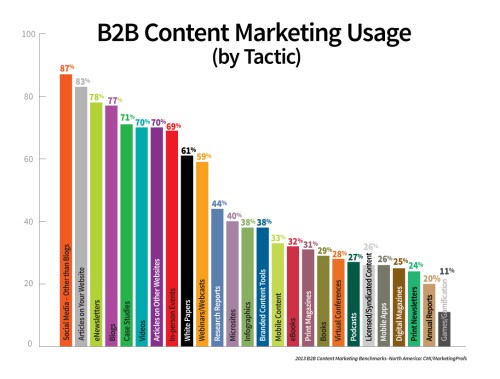
Although this is not a new marketing trend, it is something that will continue to grow this year. Content marketing is one of the main ways a company can establish it’s presence and authority in their field. According to the Content Marketing Institute, the top content marketing strategies are social media, articles on your company website, eNewsletters, and blogs. Effectively implementing content marketing into your marketing plan for 2014 is a must. To learn more about content marketing click here.
2. Social media will need to be more diverse
Not too long ago, businesses were limited by the number and types of social media outlets available for them to use…Facebook, LinkedIn, and Twitter. Now, it seems that social media networks and apps are popping up all over, and networks like Google+, Pinterest, Instagram, YouTube and Tumblr are growing in popularity. Due to this, it is more of a necessity than ever for businesses to find, experiment with, and use social media. Click here to learn more about the various social media.
3. Content focused on images become more important
Our customers are bombarded with advertisements from the beginning to the end of their day. If you look at the social media networks I mentioned above, you will see that most of them have one thing in common…images. Some of the most successful social media campaigns and blogs are image centric. With very little time and a deluge of content out there, it is easy for our customers to skim over it, so it is important to include enticing images to break up and enhance the text you’re putting out there.
4. Simplicity will reign
 We’ve all heard the saying, “Less is more,” but how does that apply to this year’s marketing trends? There is a lot of clutter in all of our daily lives, and it is easy for messages to get lost. Your customers want to know what you’re doing, what’s new with your company, and how it is good for them, but they want it to be simple. The time has passed for writing long-winded posts and advertising messages. Short, simple, and to the point is the best way to make sure your message is paid attention to.
We’ve all heard the saying, “Less is more,” but how does that apply to this year’s marketing trends? There is a lot of clutter in all of our daily lives, and it is easy for messages to get lost. Your customers want to know what you’re doing, what’s new with your company, and how it is good for them, but they want it to be simple. The time has passed for writing long-winded posts and advertising messages. Short, simple, and to the point is the best way to make sure your message is paid attention to.
Maybe the best way to summarize this is with a quote found in an article by Forbes, which said, “There is a sense that from the hyper-connectivity of our highly-digitized lives to the bright, flashy, complicated sensory input we’re fed everyday, there is no way to continue at this pace. As a result, 2013 is likely to be a year where the most successful marketing strategies will be ones that are not only simple in nature, but promote goods and services that serve to simplify the consumer’s life, or even just their customer experience.”
5. Mobile optimized content becomes more necessary
Have you taken a look around lately? How many people do you see walking around looking at the phone or tablet? How many mobile devices does your family own? The answers to these questions, most likely reveals something that most of us already know…Mobile devices reign. It is increasingly more important that all of your business’ content be mobile optimized. You can learn more about that here.
During the next few weeks that you are examining last year’s marketing strategy, making evaluations and developing your marketing strategy for 2014, remember to keep these marketing trends in mind.

Your customers are media savvy. They have their DVRs, which allow them to fast-forward through commercials. They listen to satellite radio, so they aren’t bothered by those “pesky” radio announcements. They often ignore magazine and newspaper advertisements altogether. And they are so adept at online surfing, that they tune out website banners completely.
This is where content marketing comes in.
What exactly is content marketing?
Content marketing is a marketing process that realizes and acknowledges the fact that most consumers are now capable of completely disregarding the “noise” of the marketing efforts they are being exposed to on a daily basis. It is a technique that involves creating and curating unique, relevant content that your customers will find useful and valuable. It is the art of communicating with your potential customers without directly selling to them. Instead of simply selling your services and products, you are giving information to your prospective customers that can teach them something. If done correctly, you will be marketing without interrupting your customers’ lives and you could ultimately be rewarded with their business, support and loyalty.
What is the purpose of content marketing?
Content marketing is used to attract and develop a specific target audience with the ultimate goal of creating true customer engagement. Through using content marketing, you should be striving to change and enhance your customer’s behaviour toward your company in a positive manner. If you consistently deliver valuable information to your customers you will be able to gain their trust and following.
Why is content marketing important?
- It focuses on owning media rather than simply borrowing it.
- It enhances your social media strategy.
- It helps your SEO (search engine ranking and results), because search engines reward businesses that publish unique, quality content.
- It is a successful PR strategy. It lets you address issues readers care about rather than just promoting your business.
- It creates content which drives inbound traffic and leads
What are some examples of types of content marketing?
- Blog posts
- Social media posts
- Email newsletters
- Photos: Instagram
- Podcasts
- Videos: YouTube, Instructional, Event Recordings
- Micro-videos: Vine
- E-books
- Webinars
The bottom line is that content marketing is quickly becoming the key to having a successful marketing campaign for your business. Adjusting your current marketing campaign to include a large portion of content marketing is a great way to get started in 2014.
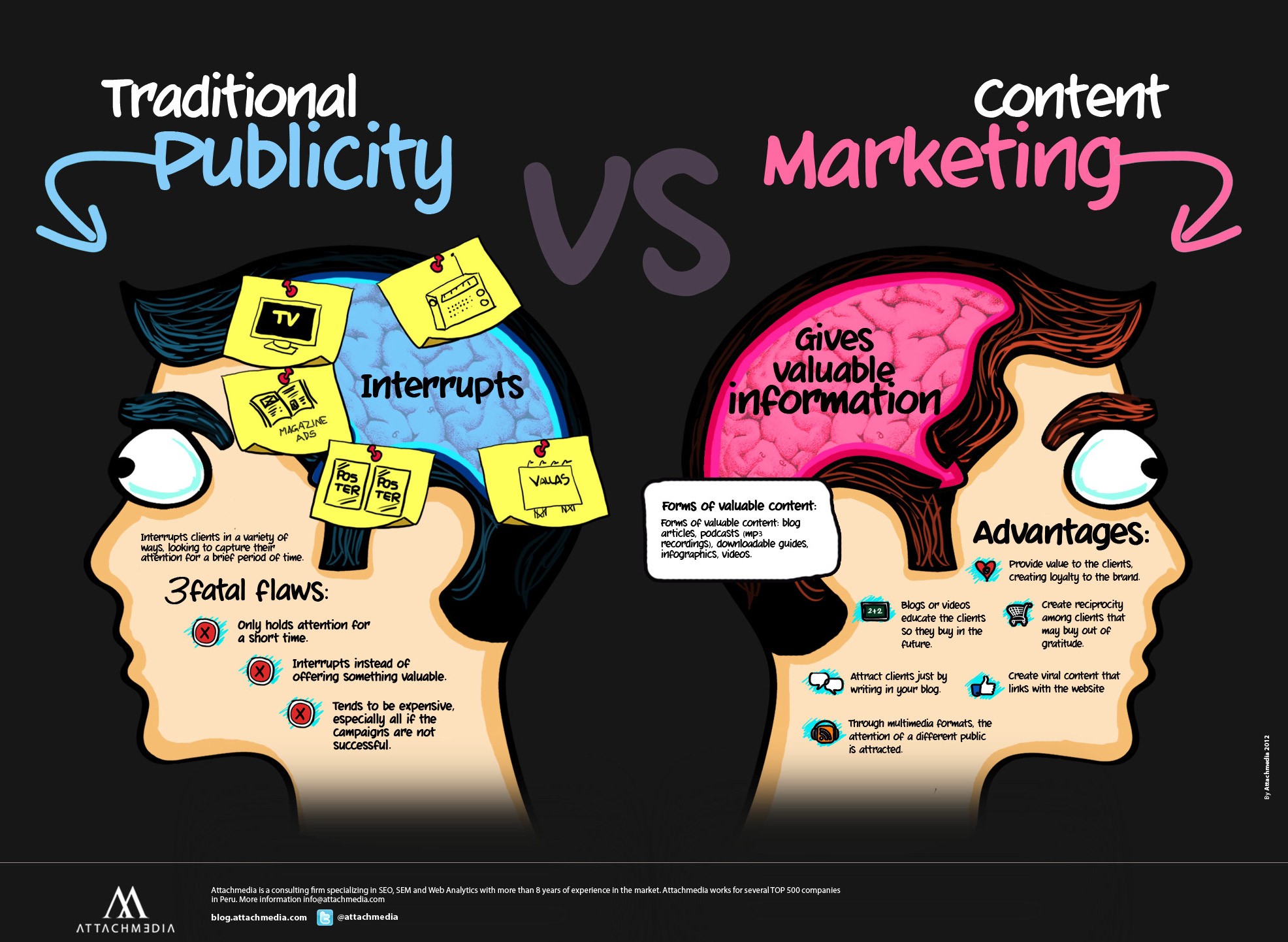

 Is Online Audience Optimization the new SEO?
Is Online Audience Optimization the new SEO?
If you have a website, search engine optimization is one of those things that you know you should be doing, but you really don’t want to. Trying to figure out what keywords are best for your website and how to get people to click your websites link is more time consuming than many people realize. But, as with everything, techniques and strategies evolve.
As Google’s algorithm has evolved they have pretty much ensured that keyword stuffing and other shady techniques are no longer a viable option for website owners. In addition, the major change of making search secure, which means that you can’t see the keywords someone is using to get to your site, has blinded website owners as to what keywords they should be using.
With all these changes, what is now important is to make a connection with your business’s audience. This is a new practice that has come around know as OAO, online audience optimization. So what does online audience optimization mean? We’ll go into detail below.
OAO takes advantage of high-quality content to create a consistent web-wide presence and generate consistent new and repeat visitors to your site. OAO combines the best practices of SEO, along with social media, content sharing, engagement mechanics, and branding.
Although OAO is an emerging strategy, many of it’s strategies can be put in place right way. Below we’ll offer tips to help get you started.
1. Focus on your brand.
Build content around your brand. Ensure that your content is true to your company’s mission and brand. Information that is important to the brand should be shared with your Webmaster, your social media strategist, your SEO team and everyone else who write content about your company. Keep in mind that every phrase and heading should be relevant to both the searcher (your potential customer) and to the product.
2. Cast a wide net.
Social media provides one of the strongest SEO correlations, so make sure you build out your presence on social media and different content sharing sites including: Google Plus, Facebook, Twitter, YouTube and Pinterest.
3. Keep a targeted audience.
Your goal should be to capture potential customers. Working to increase traffic to your site is useless if you don’t figure out a way to keep them on your site. So, you should try to target only the people who need the content that your site offers.
4. Encourage audience participation.
Did you know that time on site and the bounce rate are two factors that search engines use to evaluate websites? Offer some type of engaging content on your site that encourages user participation such as: polls, quizzes, reader-submitted content, sharing and comments.
5. Integrate your mobile strategy.
Optimize your mobile and desktop sites, not only for search engines, but for social sharing, local and national apps.
6. Don’t obsess over keyword density.
Keywords are become increasingly irrelevant with all of Google’s algorithm updates. Use your keywords in your titles and captions, and don’t worry so much about using them in the body of the text.
Overall, OAO can integrate effectively with all of your current strategies. The new strategy can enable to you begin building an ongoing relationship with your audience.
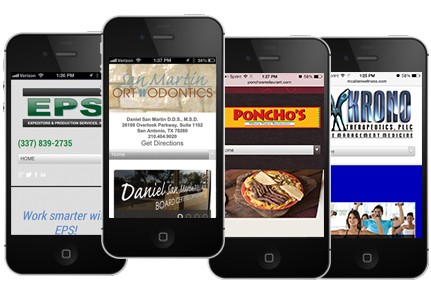
The importance of having an optimized mobile website design that is responsive on all devices is becoming increasingly important to all businesses big and small.
The amount of time and money people are spending on mobile devices such as smartphones and tablets has been steadily on the rise over the last few years, and yet, according to Adobe, there are still 45% of businesses that don’t have a mobile website that is optimized for all devices.
Mobile optimization for your site may seem like an investment you aren’t ready to take on, but just how much business are you missing out on by having a website that is not mobile friendly?
Think About This…
- 58% of all US consumers already own a smartphone. (comScore)
- Over 1.2 billion people access the web from their mobile devices. (Trinity Digital Marketing)
- Global mobile traffic now accounts for 15% of all Internet traffic. (Internet Trends 2013)
- 50% of smartphone Internet users surveyed said that even if they like a business, they would use it less often if its website did not meet their mobile-friendly standards. (Google)
- 61% of people have a better opinion of brands when they offer a good mobile experience. (Latitude)
- 95% of smartphone users have searched for local info. (Google)
- Tablet users spend 50% more than PC users. (Adobe)
Responsive Web Design is a must across all devices.
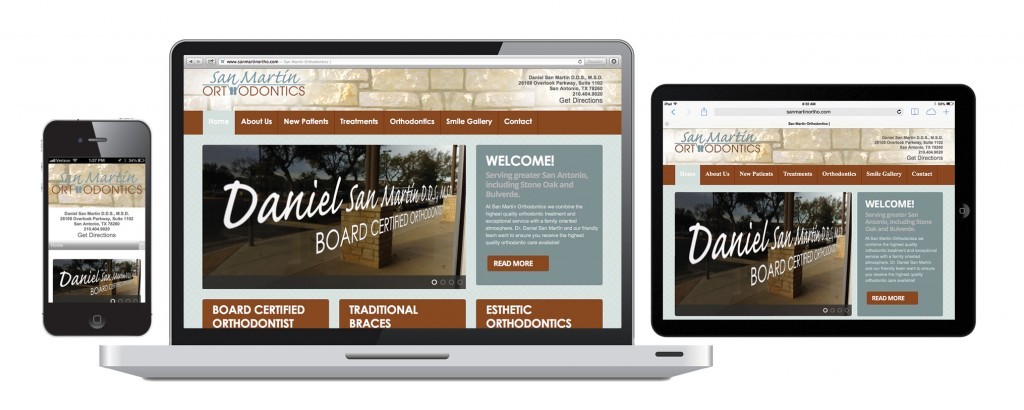
Remember This…
Mobile Sites Lead to Purchases
Although this may seem like a given, a Google survey confirmed that shoppers are more likely to buy a product or service from a mobile-optimized site. In addition, 78% of smartphone owners and 75% of tablet owners consider the “look and feel” of a company’s mobile website when considering whether or not to make a purchase from it. (Kentico Software)
Non-Optimized Sites Drive Customers Away
A large majority of survey participants said that they are looking for responsive website design. Instead of switching to a PC to find what they want from your site, they will instead find a competitor that is mobile friendly. (Google) According to Compuware, 1 in 3 respondents said that a poor mobile application experience would drive them to a competitor.
Bad Mobile Experiences Can Damage Your Company Brand
A bad mobile experience can cause frustration and annoyance with your customers. Not having a mobile friendly website design can make your customer feel as though you do not care about your business. Although more than 75% of smartphone and tablet owners say they often return to websites that are visually appealing and function well on their devices, 44% say they would never go back to the site, and 52% would not return often if the website is not responsive and does not perform well on their device. (Kentico Software)
Is it worth not having a mobile optimized site for your business?
It’s time to optimize your mobile website and take it…


Online marketing has been growing more and more in popularity. This trend is very common among start-ups and small business owners that have minimal advertising budgets. Online marketing can be a scary venture for those who are inexperienced.
Where do I start?
How much should I pay for online advertising?
What websites / services should I use?
How do I get my message where my customers are?
These are just a few of the common questions business owners have when beginning online marketing. Grasping the full realm of the online marketing world is a process that can take years and is often ongoing due to its ever-changing nature. Getting started with online marketing is manageable, but there are a few tips you should remember when doing so.
1. You don’t accept the reality of time.
Setting up profiles on all of the various social media sites, building a website, and setting up and claiming your listings on all of the various online directory websites can be a daunting task, and now you are going to have to set aside time to effectively manage all of those accounts. It will take much more effort and time than you initially think to establish an online presence, build a following, monitor for negative & positive reviews, and keep your followers engaged.
2. You spread yourself too thin.
It is tempting to want to have your business listed and marketed on every single social media platform available, but the reality is that resources are limited, and if you spread yourself too thin across too many social media networks, you will end up with less than desirable results. Start with one or two that you think fit your target market, build your audience, perfect your engagement on those sites, and then start adding other networks, but make sure not to add more than you can handle with your resources.
3. You are not engaging your online audience.
You’ve gotten to the step where you’ve built a good base following, but you aren’t getting the results you want. The most common reason this happens is that you are not engaging your audience. You must always make sure to post content that is relevant to your business and products, but you do not want all of your content to be simple advertisement. Post content that your audience will find useful and valuable, so they want to comment, share and repost. Also, make sure to respond to each and every comment, question, tweet, or other social interaction that have been left on your pages. Show your audience that you care about what they have to say and that you are active online daily.
4. You don’t have an online marketing budget.
Although it can sometimes be a daunting task to determine where to spend money, how to spend it, and how much to spend online, spending a little bit of money can save you in the long run. If done smartly, investing a small amount of money in Facebook or Twitter ads can increase traffic to your website or physical location.
Marketing your business online can sometimes be a stressful and intimidating task, but if you avoid the most common mistakes outlined above, you should be more productive and feel much more confident in your efforts.





 We’ve all heard the saying, “Less is more,” but how does that apply to this year’s marketing trends? There is a lot of clutter in all of our daily lives, and it is easy for messages to get lost. Your customers want to know what you’re doing, what’s new with your company, and how it is good for them, but they want it to be simple. The time has passed for writing long-winded posts and advertising messages. Short, simple, and to the point is the best way to make sure your message is paid attention to.
We’ve all heard the saying, “Less is more,” but how does that apply to this year’s marketing trends? There is a lot of clutter in all of our daily lives, and it is easy for messages to get lost. Your customers want to know what you’re doing, what’s new with your company, and how it is good for them, but they want it to be simple. The time has passed for writing long-winded posts and advertising messages. Short, simple, and to the point is the best way to make sure your message is paid attention to.





